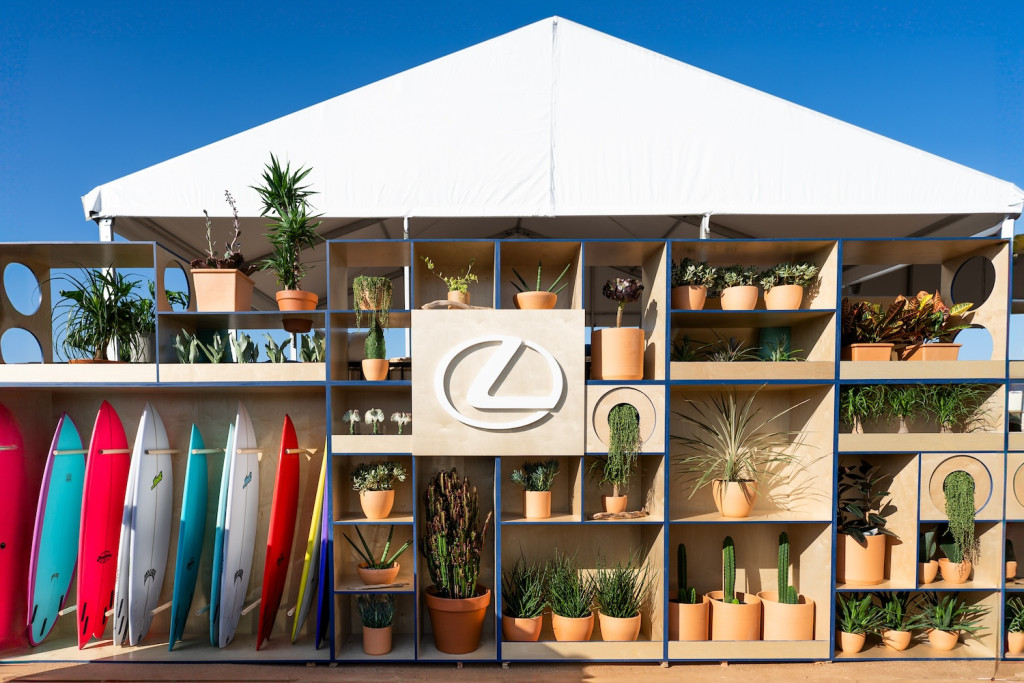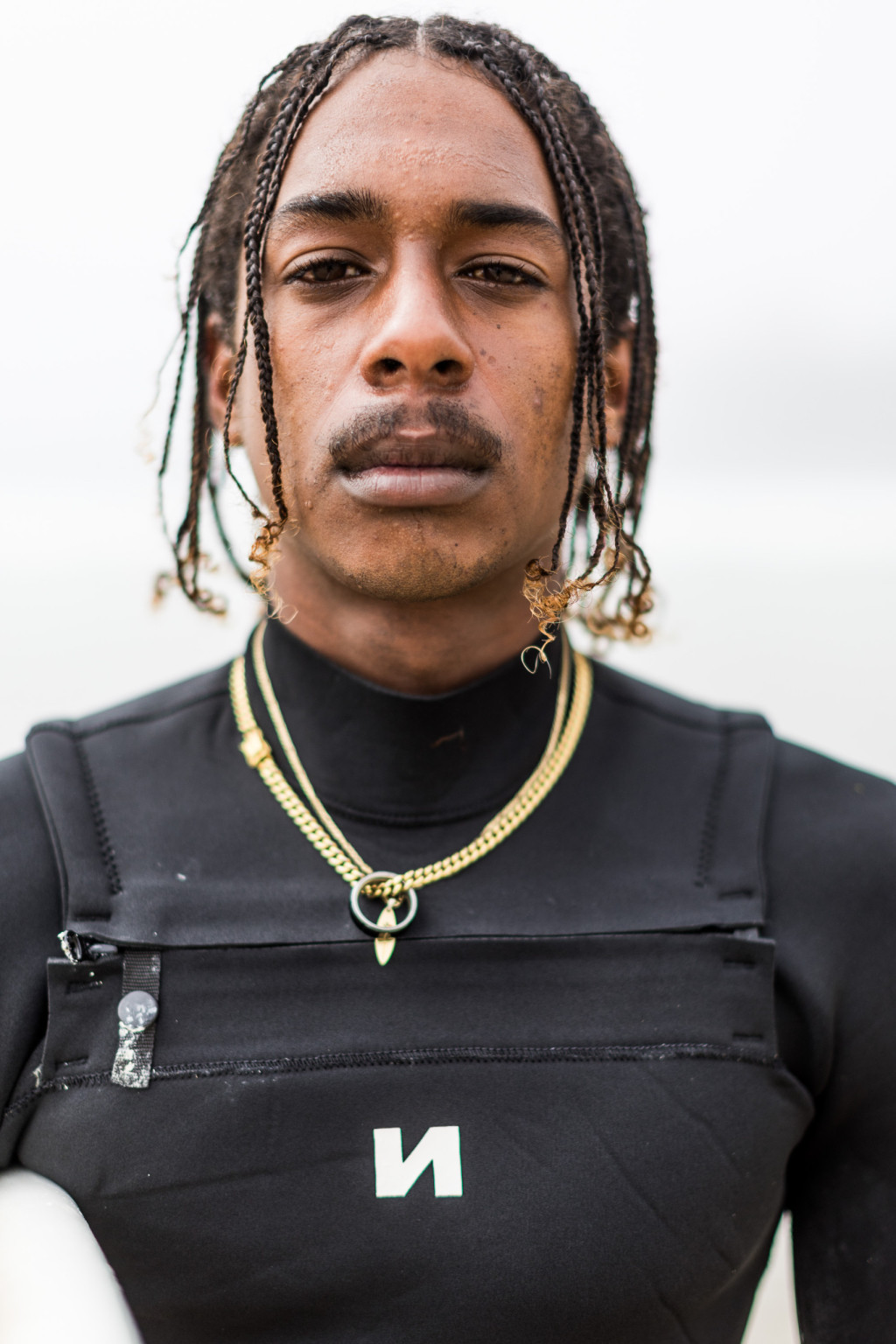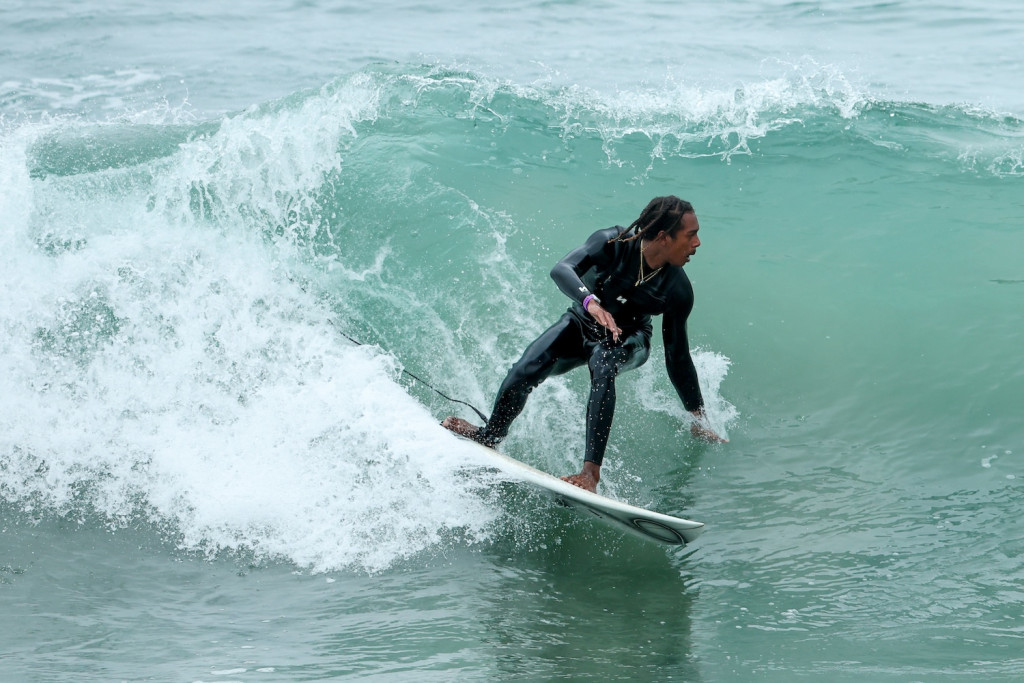The Lexus US Open of Surfing is officially underway in Huntington Beach, California, transforming the iconic coastal city into a beautiful world-class surf competition, cultural storytelling, and community celebration.
For nine days, the beach becomes the backdrop for athletes, creatives, and brands to connect, compete, and showcase what the future of surf culture looks like. And this year, one name that continues to stand out in that conversation is Julian Williams.
Williams isn’t just riding waves, he’s making them. As a rising Black Hawaiian professional surfer, Williams represents a new generation of athletes who are not only pushing boundaries in the water but also challenging what mainstream surf culture has historically looked like. With his growing influence and undeniable talent, he’s become one of the most visible and inspiring figures in the sport, especially for communities that haven’t always seen themselves reflected on the shoreline.

This year’s Lexus US Open marks the continuation of a powerful collaboration between Lexus, the World Surf League, and Complex, all aimed at reshaping the narrative around inclusion in surfing. Through their partnership with A Great Day in the Stoke (AGDITS), the largest global gathering of Black surfers, Williams’ story is being amplified in a major way, connecting luxury, youth culture, and representation through a shared love of the ocean.
Before the competition began, we caught up with Williams to talk about his journey from picking up his first surfboard to now being featured at one of the most high-profile events in the sport. From his personal surfing philosophy to what it means to carry the torch for future generations, Williams opened up about the deeper purpose behind his passion.
QG: Julian, what’s a typical day look like for you when you’re training?
Williams: This morning, I woke up at 4:30, brushed my teeth, took a quick little shower, and I was actually able to get a workout in at Surf Ready Fitness. I like to get everything done before noon so I can kind of breathe and have time and space to do other things. Work out at the gym. From there, I’ll come home and make some breakfast, either go to work if I got a scheduled surf lesson that day, or I’ll go straight to the beach and I’ll surf for about two or three hours.
I try to go out there and just train mentally like I’m going to be in a heat. So I’ll like time myself on a watch, break it down 20 minutes, 25 minutes, and just mentally score myself. And then my girlfriend, Frankie, she’s my filmer on the side as well. That also helps me a lot to go back and self-coach myself. It’s like when you’re able to see as a surfer what you look like for what you’re doing, it’s a lot easier to make that correction for the next time.
QG: Take us back. When did you first pick up a surfboard?
Williams: I was at a basketball one of my basketball teammates at the time; he had a birthday party and his dad took us all down to the beach. We had a barbecue, which is something that we do in Hawaii; you have a family barbecue on the beach with your friends. He set up like six or seven surfboards on the beach and taught us how to wax it up and put the leash on, and was like, ‘All right, go ahead and have fun.’ And I didn’t know anything about it, so I just ran out there and before this, I was yes very versed in the ocean; I did a lot of swimming.
Before surfing, I was a triathlete. I was actually ranked within the top three in Hawaii for my age group when I was like eight to 13 years old. I was doing this for a long time. I just took it out and got tumbled, got rolled, but still kept on going back, going back… So from that, it kind of sparked my interest. 13 years old was when I first kind of started surfing.

QG: What did your family think when you told them you wanted to be a surfer?
Williams: My dad was an avid free diver. So that’s kind of what I did before surfing. So I was very familiar with the water and swimming. And then my uncles on my mother’s side were bodyboarders. So they knew the waves as well. So there were kind of similarities in what I was doing. So it wasn’t like, ‘Oh, what are you doing?’ But they also did not know how to paddle, stand up, or catch waves. They couldn’t break anything down to me at all.
QG: How did being a Black Hawaiian surfer shape your journey in the sport?
Williams: Before I was taken under the wing of this also African-American Hawaiian surfer named Buttons Kuluhiokalani, I didn’t necessarily know where I fit in, in that space, if that makes sense. So I was just surfing because I just like to do it. It wasn’t until he taught me what it is not only to love the ocean and to love the sport, but then to go and share it with others. So I took that and was like, ‘If I can build this skill, there’s something I got. I can share and I can represent this space that I was in.’ In Hawaii, we have a lot of melanated, dark-skinned people, but I was the only one with curly hair.
I had a huge Afro at the time. So I definitely stuck out. And then it wasn’t until maybe a few years later, I met another brother who lived on the South Shore, who’s also surfing in the event this year, Kaniela Stewart. I met him and we instantly clicked. It was one of those things where, if there was a surfer of color, we stuck together—but honestly, there were only two or three of us growing up.
At the pro level, we didn’t necessarily see, ‘Oh, we can get a sponsorship or we could get sent here or we can go and be on the front cover of a magazine.’ I’ve never seen a Black dude on the front cover of a surfer magazine before.
QG: Did the industry make it tough for you to break in?
Williams: Very difficult. I was blessed as a young kid. I was seen by a shaper who lived out here [California]. So I was able to come out during the summers to train. But other than that, I wasn’t in that circle of Hurley or Billabong or whatever. And it wasn’t because of my skill level. I fully felt that it was because I didn’t look the part. I didn’t have the blue eyes and had the long blonde hair, but I served down near just as good as those kids and put in just as much work as it was.
QG: What advice would you give to a young Black kid who wants to start surfing?
Williams: Show up with an open mind. If you’ve never surfed before, if you’ve never swam before, that’s a good place to start. Start learning about the ocean, start learning about the beach that you’re going to be surfing at, or the beach that you’re going to be swimming at. And then don’t be discouraged with the lack of representation. We make the representation. If there’s none of us out there, then there isn’t. So if just by you going out there, there is that space.
The Lexus US Open of Surfing will be at Huntington Beach until August 3. Check out the full interview.
Photo Credit: A-Game Photography




